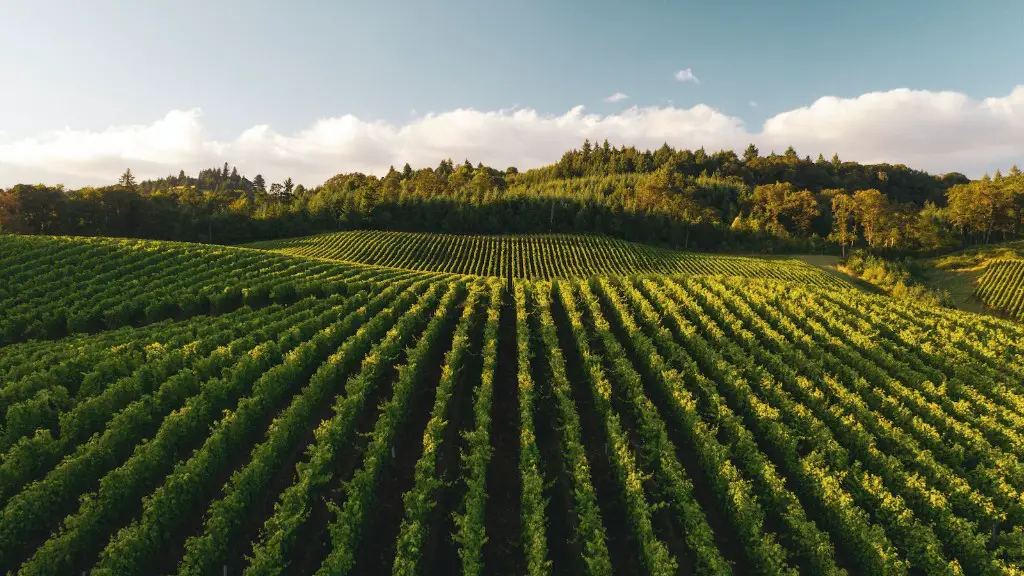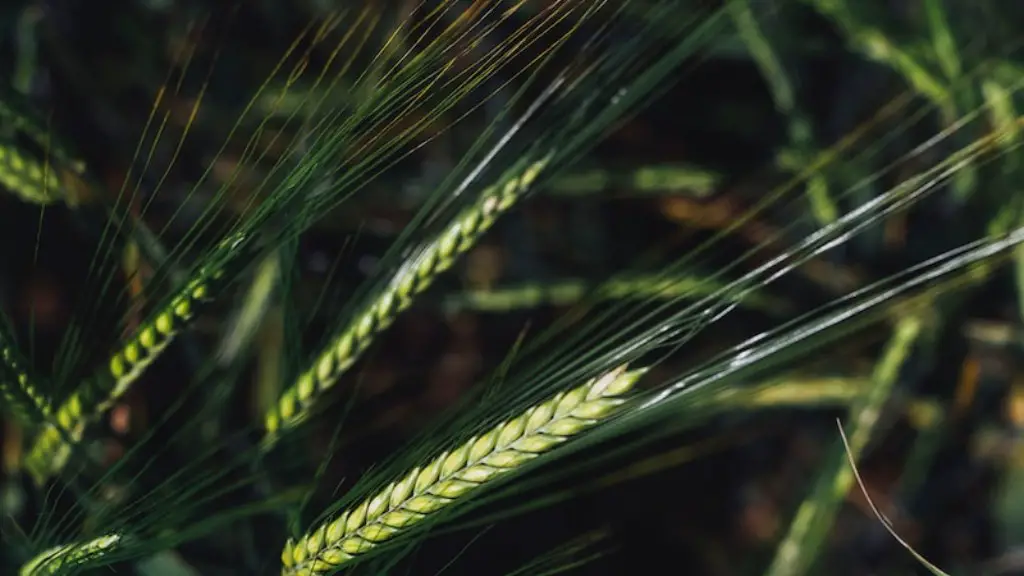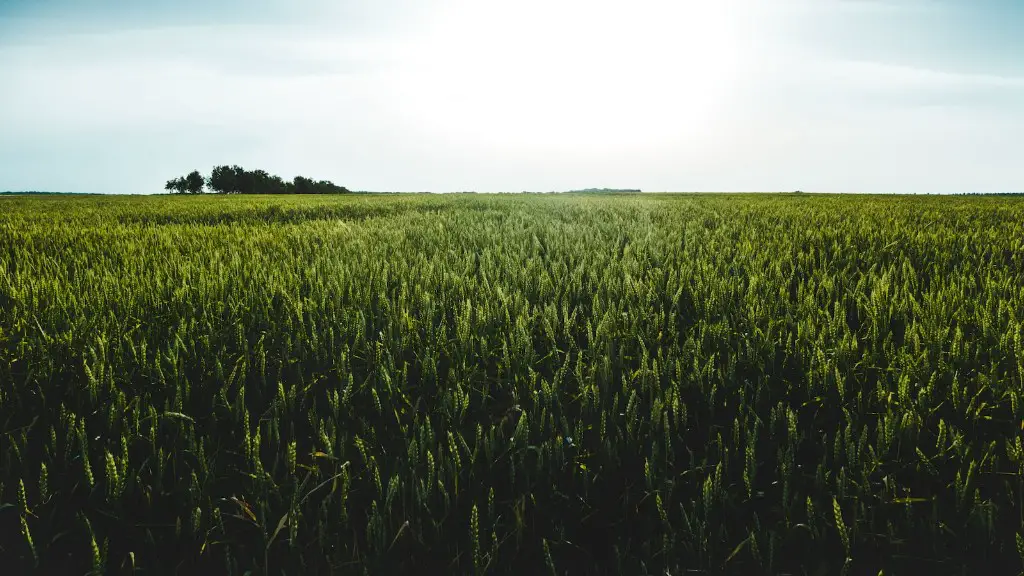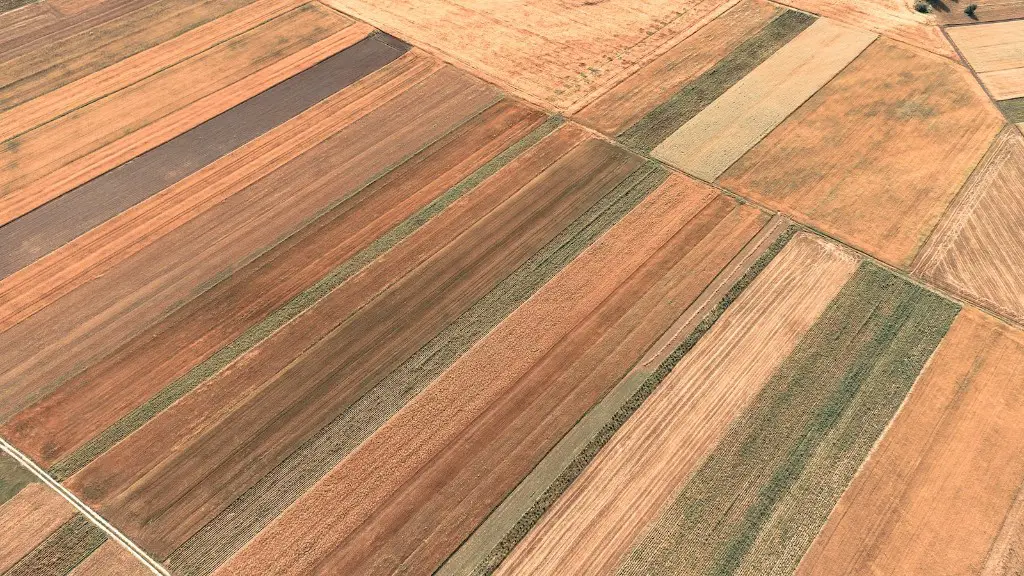Free peasant agriculture is a type of agricultural system in which peasant farmers work land that does not belong to them and is not legally owned. It is characterized by the cultivation of communal lands, or those on which peasant households have free access and use rights by virtue of their long-standing occupancy. This type of agriculture is found in most parts of the world, particularly in developing countries with fragile land tenure regimes. The defining characteristics of free peasant agriculture are its reliance on locally adapted traditional knowledge, its communal nature, and its low-input agricultural techniques.
These aspects of free peasant agriculture provide a number of benefits for subsistence farmers. It is much more sustainable than other forms of agriculture, as it does not rely on costly inputs such as fertilizers, pesticides, and mechanization. Additionally, free peasant agriculture is resilient to environmental extremes, such as floods and droughts, thereby increasing food security. This type of agriculture is also highly effective in terms of production, as it utilizes traditional methods of labor and land management.
Despite its benefits, however, free peasant agriculture presents a number of challenges to subsistence farmers. The lack of legal ownership of the land limits their ability to access credit and other resources. Additionally, traditional methods of production often result in lower yields and poorer quality food than more modernized forms of agriculture. Finally, free peasant agriculture can be difficult to scale up and make more profitable, as it relies primarily on individual peasant farmers rather than large-scale operations.
Communal Land Tenure
Communal land tenure is a key component of free peasant agriculture. It involves the allocation of a certain area of land for use by an established group or community. In most cases, these groups consist of individuals or households who descended from a common ancestor, who have maintained shared access to the land from one generation to the next. In some cases, communal land tenure involves the recognition of traditional land rights such as grazing, foraging, and hunting in addition to agricultural rights of use. The individual members of a communal landholding group may share certain rights over the resources on their land, such as the right to sell their harvest or the right to rent out land to others. Such rights are often not clearly established in law.
Communal land tenure allows subsistence farmers to access resources needed to pursue an independent livelihood. As they do not have the resources needed to take out loans to purchase land, they are able to access land on which they can grow their crops. Additionally, communal land tenure serves as a form of protection and security against displacement, as it provides a secure and protected space for farmers to cultivate without fear of eviction or displacement. Finally, communal land tenure provides families with the freedom to pursue their own production strategies, as it allows them to engage in individual or joint enterprises on the land.
However, communal land tenure also presents some challenges for free peasant agriculture. In some cases, the rules of communal land tenure are unclear or unclearly defined, leaving farmers vulnerable to land grabs and displacement. Additionally, if the rules governing communal land tenure are not clearly established in law, disputes over land rights between different households may arise. Finally, communal land tenure often does not grant farmers full proprietary rights over their land, limiting their ability to access credit or other resources.
Traditional Knowledge and Techniques
Another key element of free peasant agriculture is the use of traditional knowledge and techniques. This traditionally-acquired knowledge encompasses the know-how passed down from one generation to the next regarding the cultivation of crops, the breeding of animals, and the use of natural resources. This type of knowledge has been developed over centuries by peasant farmers through trial and error, enabling them to adapt to changes in their environment and develop appropriate techniques for cultivating their crops successfully.
The use of traditional knowledge and techniques allows farmers to make use of local resources in a sustainable manner. It enables them to produce their own food without having to purchase expensive inputs, thereby increasing their food security. Additionally, traditional knowledge and techniques help farmers to deal with and adapt to environmental challenges and stresses, such as droughts, floods, and pests. Finally, these methods help to maintain genetic diversity and preserve local food varieties.
However, traditional knowledge and techniques can also be a source of challenges for free peasant agriculture. For instance, traditional methods of production often result in lower yields than more modernized forms of cultivation. Additionally, traditional knowledge can be limited in terms of effectiveness, as farmers are less likely to be exposed to new technologies and methods that could improve their production. Finally, traditional knowledge and techniques can be difficult to share, as it is passed on largely through oral tradition, making it difficult to spread to other areas.
Low-input Agriculture
Free peasant agriculture is also characterized by its reliance on low-input agriculture. This means that farmers are able to produce their crops with minimal use of chemical fertilizers, pesticides, and other inputs. This helps to make their agriculture more sustainable and resilient to extreme climatic conditions, resulting in increased food security. Additionally, it reduces the cost of production for the farmers, which can be particularly important for subsistence farmers whose incomes are limited.
However, low-input agriculture can also present some challenges for free peasant agriculture. As farmers rely on fewer inputs, yields may be lower than those of more intensive forms of agriculture. Additionally, low-input relationships with farmers can limit their access to the latest technologies and methods, making it more difficult for them to increase their production. Finally, low-input agriculture can make it more difficult for farmers to expand their operations, as they lack the capital necessary to invest in more inputs and technologies.
The Role of Peasant Farmers
Peasant farmers are essential for the success of free peasant agriculture. It is their knowledge and hard work that enables them to successfully grow and harvest their crops. Peasant farmers are highly skilled and knowledgeable about agriculture, able to utilize traditional methods to maximize yields and adapt to changing environmental conditions. Furthermore, peasant farmers often play an instrumental role in the conservation of traditional crops and varieties, as they are well-versed in the methods needed to cultivate these crops and their associated traditional knowledge.
In addition to their knowledge of agriculture, peasant farmers also provide a vital link between rural populations and the wider world. They often serve as the primary source of information to other farmers in the community, and may even act as intermediaries between local and global markets. Furthermore, peasant farmers are often active participants in local and global politics, advocating for the rights of small-scale farmers and engaging in agricultural-related lobbying and grassroots actions.
However, peasant farmers face a number of challenges in their work in free peasant agriculture. As they are largely without access to land rights, credit, and capital, it can be difficult for them to make their operations profitable or expand their scale of operations. Additionally, their lack of access to modern inputs, technologies, and agronomic practices means that their yields may be lower than those of more modernized operations. Lastly, as free peasant agriculture is reliant on communal land tenure, disputes over rights to the land and resources within the community can lead to tensions, divisions, and conflict.
Environmental Implications
The environmental implications of free peasant agriculture should also be taken into account. The reliance on traditional methods of production results in fewer inputs and technologies being used, making it more sustainable than industrialized forms of agriculture. The use of traditional knowledge and low-input agricultural techniques helps to ensure that the natural environment is preserved, as farmers are less likely to use pesticides and chemical fertilizers that can be harmful to biodiversity. Further, free peasant agriculture helps to reduce carbon emissions by relying on fewer mechanized inputs and technologies.
Despite its environmental benefits, free peasant agriculture can still impact the environment negatively in certain circumstances. For example, over-cultivation of land or communal resources can have negative environmental impacts. Additionally, the lack of access to modern inputs, such as fertilizers and pesticides, can lead to lower yields that may be damaging to the environment. Finally, poorly managed communal land tenure can lead to overexploitation of shared resources, leading to soil degradation and deforestation.
Conclusion
Free peasant agriculture is an important and integral part of many subsistence farmers’ livelihoods. It is characterized by the cultivation of communal lands, the use of traditional knowledge and techniques, and a reliance on low-input agriculture. These aspects of free peasant agriculture provide a number of benefits to farmers and their communities, including increased sustainability and food security. However, free peasant agriculture also presents a number of challenges, such as the lack of legal ownership of land, the lower yields associated with traditional methods of production, and the difficulty in scaling up operations. The environmental implications of free peasant agriculture should also be considered, as it can both positively and negatively impact the environment. Ultimately, free peasant agriculture has the potential to be a vital source of livelihoods for subsistence farmers if managed correctly.




